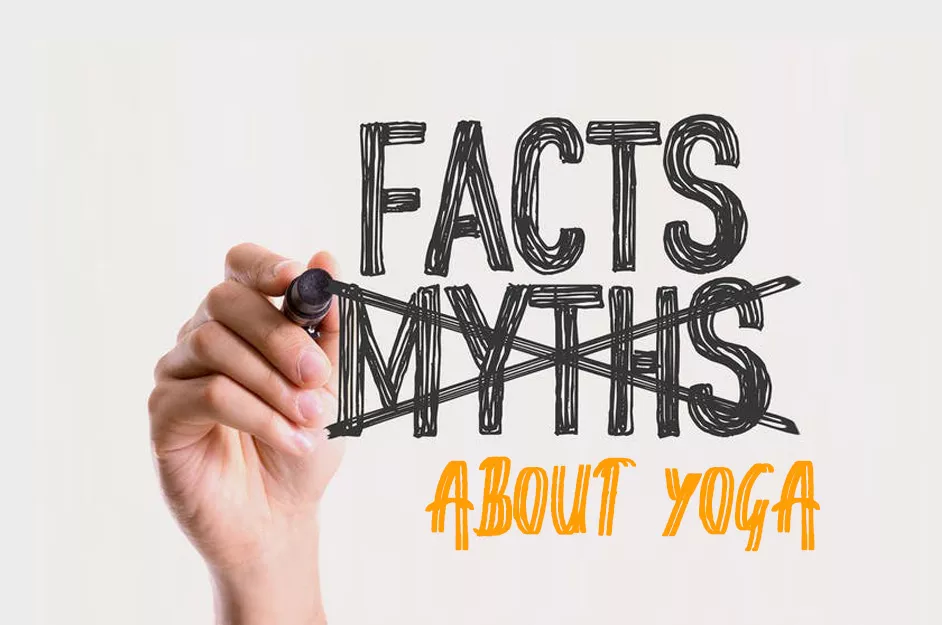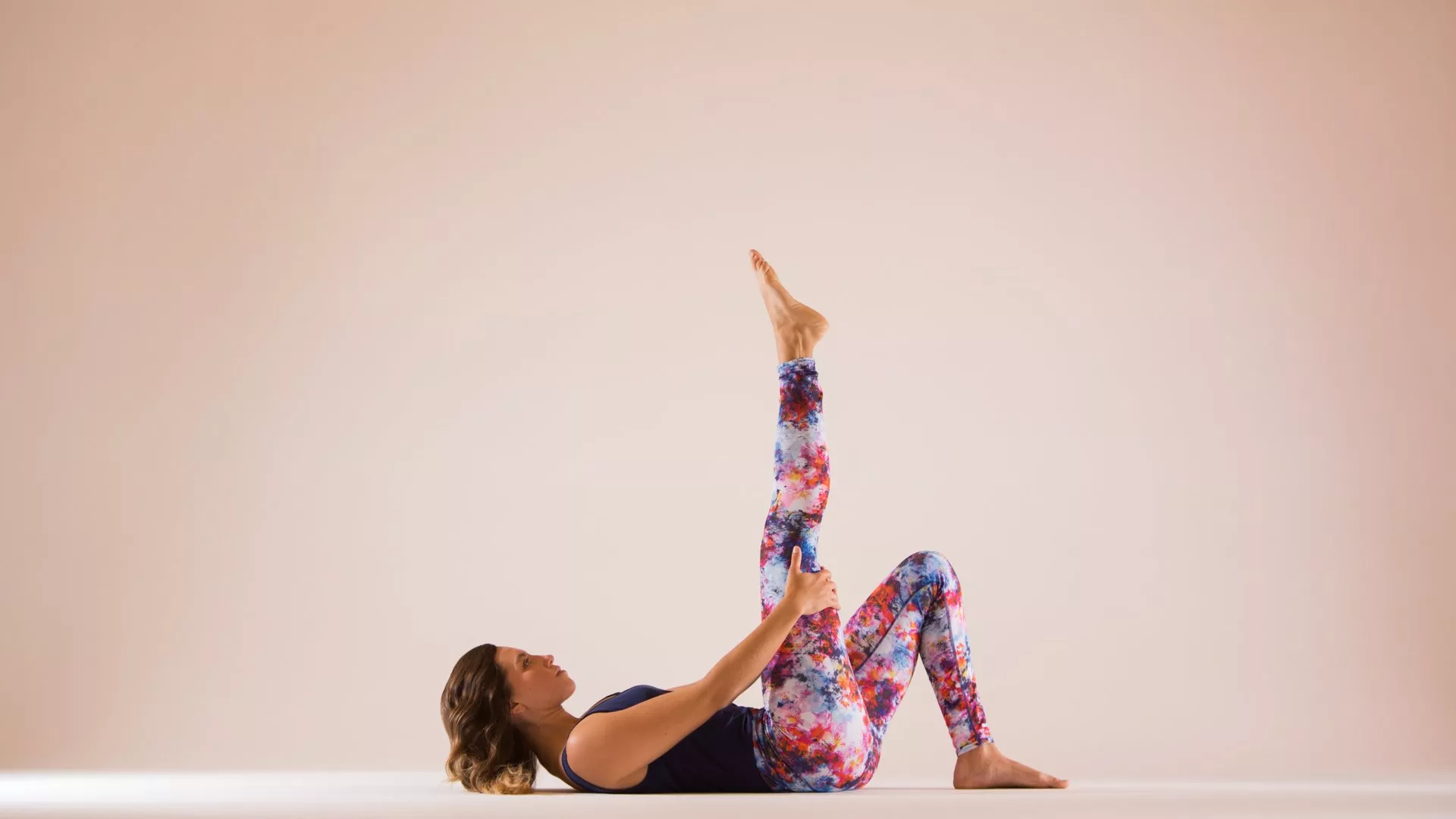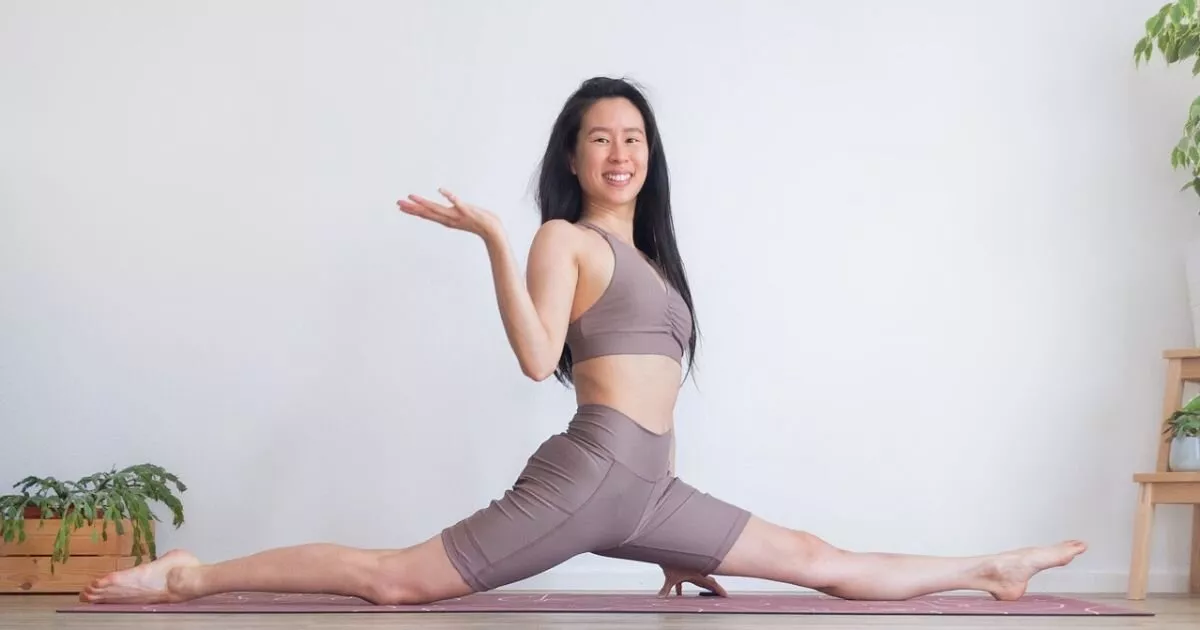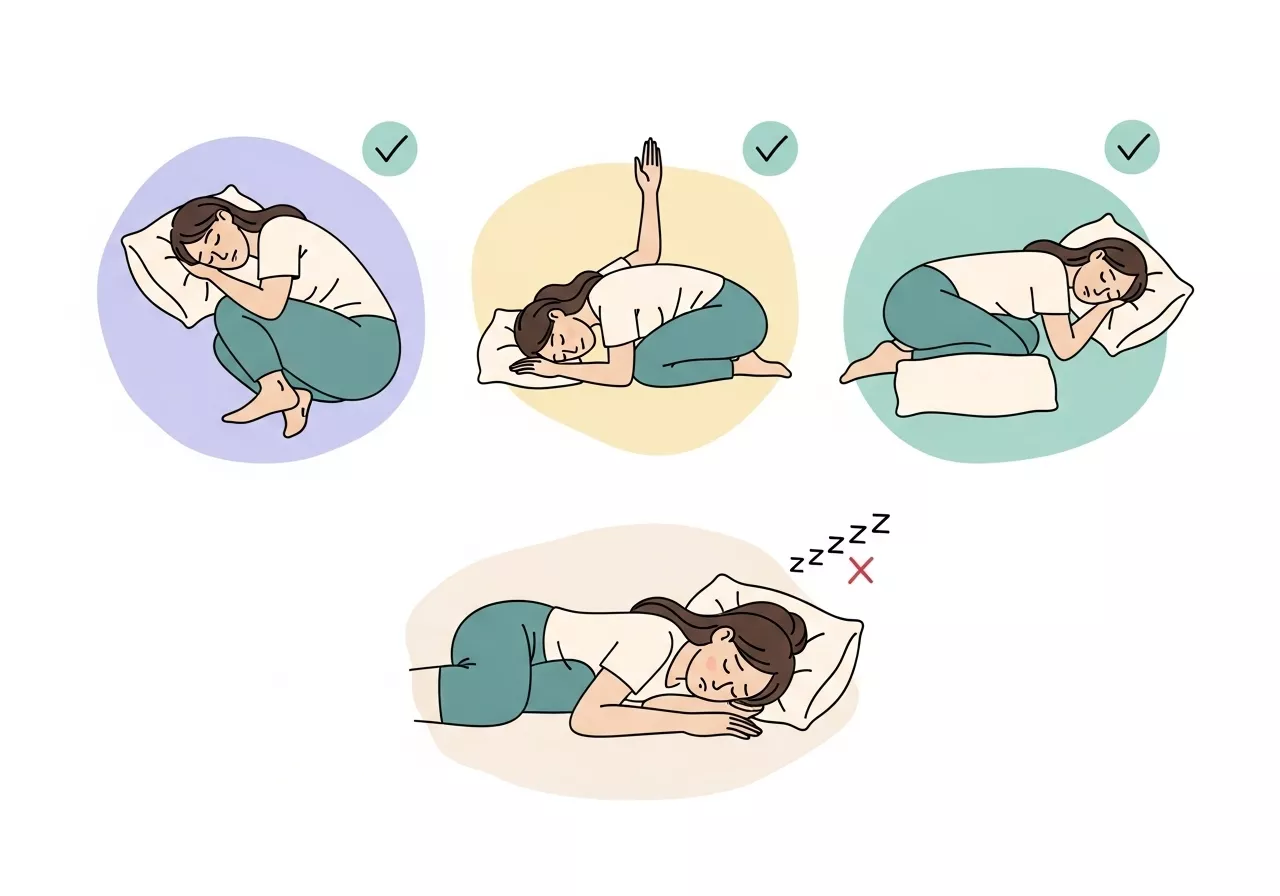Yoga is an ancient practice that combines physical postures, breathwork, and meditation to foster harmony between the mind, body, and spirit.
Despite its long history and proven benefits, yoga remains clouded by myths and misconceptions that deter many people from exploring its transformative potential.
From assumptions that yoga is only for the young and flexible to the belief that it’s merely a religious or spiritual practice, these misunderstandings prevent countless individuals from stepping onto a yoga mat.

However, yoga is for everyone, and its benefits are vast—spanning physical, mental, emotional, and even spiritual dimensions.
In this detailed guide, we’ll debunk 10 of the most common myths about yoga and provide a deeper understanding of what this powerful practice is truly about.
1. Myth: Yoga Is Simply a Set of Stretches
At first glance, yoga may seem like a glorified stretching routine, but this view drastically oversimplifies its essence.
Stretching, while an important component of yoga, primarily serves to lengthen muscles and improve flexibility.

Yoga, however, encompasses far more than physical stretching. It integrates movement, breath, mindfulness, and mental focus to create a holistic experience.
The sequences of poses in yoga, often referred to as flows or vinyasas, link one movement to the next, all while synchronizing with your breath.
This combination not only strengthens the body but also calms the mind.
For example, a Sun Salutation sequence is a dynamic flow that warms up the muscles, builds endurance, and increases blood flow.
Yoga also incorporates elements of balance, coordination, and resistance training.
Many poses, such as Plank, Warrior II, or Chair Pose, require sustained engagement of the core and other muscle groups, making yoga an effective form of functional strength training.
Furthermore, the spiritual component of yoga encourages practitioners to cultivate self-awareness and introspection, making it a practice that nurtures the body, mind, and soul simultaneously.
Key takeaway: Yoga is far more than stretching—it’s a multifaceted practice that challenges the body and mind, fostering strength, mindfulness, and inner peace.
2. Myth: You Need to Be Flexible to Do Yoga
One of the most common deterrents for beginners is the idea that yoga requires a certain level of flexibility.
This myth has been perpetuated by social media images of advanced practitioners contorting their bodies into seemingly impossible shapes.

However, flexibility is not a prerequisite for yoga. Instead, yoga is a tool to improve flexibility over time.
For instance, in poses like Downward-Facing Dog, individuals with tight hamstrings may find it difficult to press their heels to the floor.
This is perfectly normal for beginners. The primary focus of this pose is to lengthen the spine and align the body, not to achieve a picture-perfect form.
Progress in yoga is measured not by how flexible you are but by how present you are in the practice.
Flexibility develops gradually through consistent effort and patience.
More importantly, yoga is about building stability and strength in the body and cultivating a calm and focused mind.
Key takeaway: Flexibility is not a requirement for yoga. It’s a benefit that develops over time through consistent practice.
3. Myth: Yoga Is Not a Workout
The belief that yoga isn’t a legitimate form of exercise is rooted in the misconception that it’s only about slow, gentle stretching.
However, yoga can be as physically demanding as many traditional workouts, depending on the style and intensity of practice.
For example:
- Power Yoga and Vinyasa Flow classes involve dynamic movements that elevate the heart rate, improve cardiovascular endurance, and build muscle strength.
- Ashtanga Yoga follows a structured sequence of poses that requires discipline, stamina, and physical strength.
- Even slower styles like Hatha Yoga or Yin Yoga engage deep muscles and connective tissues, improving posture and joint health over time.
Studies have shown that yoga offers many of the same benefits as aerobic exercise, such as improving heart health, enhancing lung capacity, and reducing blood pressure.
Additionally, yoga helps release endorphins like serotonin and dopamine, contributing to the same “post-workout high” that you’d experience after a run or gym session.
Key takeaway: Yoga is a full-body workout that improves strength, flexibility, endurance, and mental clarity, making it an excellent form of physical activity.
4. Myth: Yoga Is Only for Young People
Another common misconception is that yoga is reserved for the young and physically fit.
This myth discourages older individuals from exploring yoga, even though the practice can be highly beneficial for people of all ages.
In fact, yoga is especially valuable for older adults as it helps improve balance, joint mobility, and overall strength—key factors in reducing the risk of falls and maintaining independence.
Chair yoga, restorative yoga, and gentle yoga are all examples of styles that cater specifically to the needs of seniors.
Beyond physical benefits, yoga’s mental and emotional advantages, such as reduced stress, improved focus, and a greater sense of well-being, make it an excellent practice for aging gracefully.

Key takeaway: Yoga is not bound by age. It can be adapted for anyone, from young children to seniors, offering a wide range of physical and mental benefits.
5. Myth: Yoga Is Only for Women
The association of yoga with women stems partly from media representations and cultural trends in the West. However, yoga’s origins tell a different story.
Historically, yoga was practiced exclusively by men in ancient India for centuries.
Today, yoga’s benefits are universally applicable to both men and women. Men can particularly benefit from yoga’s ability to:
- Improve flexibility and mobility (especially for tight muscles from sports or weightlifting).
- Enhance core strength, balance, and stability.
- Relieve stress and promote relaxation.
In fact, many athletes and fitness enthusiasts incorporate yoga into their routines to complement their training and prevent injuries.
Yoga is not about gender—it’s about improving overall well-being for anyone willing to step onto the mat.
Key takeaway: Yoga is for everyone, regardless of gender. Both men and women can benefit equally from its physical, mental, and emotional advantages.
6. Myth: Yoga Is Not Suitable for Overweight Individuals
One of the most damaging myths is the belief that yoga is only for people with slim, athletic bodies.
This misconception can make those with larger body types feel unwelcome in yoga spaces.
However, yoga is truly for everyone, regardless of size or fitness level.
Yoga poses can be modified to suit all body types. Props such as yoga blocks, bolsters, and straps can help practitioners access postures comfortably.
Many yoga teachers are trained to create inclusive environments, offering modifications to ensure every participant feels supported.
Yoga encourages self-acceptance and body positivity, making it an ideal practice for individuals of all shapes and sizes.
Key takeaway: Yoga is inclusive and accessible to people of all body types. Modifications and props ensure that everyone can enjoy its benefits.
7. Myth: Yoga Takes Too Much Time
Modern life often leaves little time for self-care, and many people believe they can’t fit yoga into their busy schedules.
However, yoga is one of the most flexible (pun intended) forms of exercise when it comes to time commitment.
While traditional yoga classes may last 60-90 minutes, shorter sessions can be equally effective.
A quick 15- or 20-minute yoga practice can help reset your mind, relieve tension, and energize your body.
For those with unpredictable schedules, integrating yoga into your daily life can be as simple as:
- Practicing a few poses in the morning.
- Taking a 5-minute breathing break at work.
- Using a quick flow to unwind before bed.
Key takeaway: Yoga can fit into even the busiest schedules. Short, consistent practices can still deliver meaningful results.
8. Myth: Yoga Is a Religious Practice
Although yoga has roots in ancient Indian traditions and is closely associated with Hinduism, it is not a religion.
Instead, yoga is a spiritual and philosophical discipline that focuses on self-awareness, mindfulness, and inner peace.
For some, yoga can complement their existing religious or spiritual beliefs.
For others, yoga is a purely secular practice focused on physical and mental well-being. Its universality makes it accessible to individuals of all faiths or none at all.
Key takeaway: Yoga is not a religion. It’s a practice that fosters mindfulness, self-awareness, and inner harmony, regardless of one’s faith or beliefs.
9. Myth: Yoga Can Be Mastered Through Books or Online Tutorials
Books and online tutorials can provide a basic introduction to yoga, but they cannot replace the value of learning from an experienced instructor.
A skilled teacher can provide personalized guidance, correct your alignment, and ensure you practice safely.
Improper alignment or overexertion in certain poses can lead to injuries, especially for beginners.
Attending a class or working with a certified instructor ensures you develop good habits and build a solid foundation for your practice.
Key takeaway: While online resources are helpful, learning yoga from a trained teacher is essential for a safe and effective practice.
10. Myth: You Can’t Practice Yoga with a Bad Back
For individuals with back pain or injuries, yoga may seem out of reach. However, yoga can be a powerful tool for alleviating back pain when practiced mindfully.
Poses that strengthen the core, improve posture, and increase flexibility in the hips and spine can reduce strain on the back.
Gentle stretches, such as Cat-Cow Pose or Child’s Pose, promote mobility and relieve tension in tight muscles.
Consulting with a doctor and working with a knowledgeable instructor can ensure that your practice is safe and tailored to your needs.
Key takeaway: Yoga, when practiced mindfully, can help alleviate back pain and improve overall spinal health.
Final Thoughts
Yoga is an inclusive and transformative practice that transcends age, gender, body type, and fitness level.
By debunking these common myths, we can create a more accurate understanding of yoga’s potential to enhance physical, mental, and emotional well-being.
Whether you’re a beginner or a seasoned practitioner, remember that yoga is a journey, not a destination.
It’s not about achieving perfection but about finding balance, inner peace, and self-awareness.
So, let go of the misconceptions, embrace the practice, and discover what yoga can do for you.



